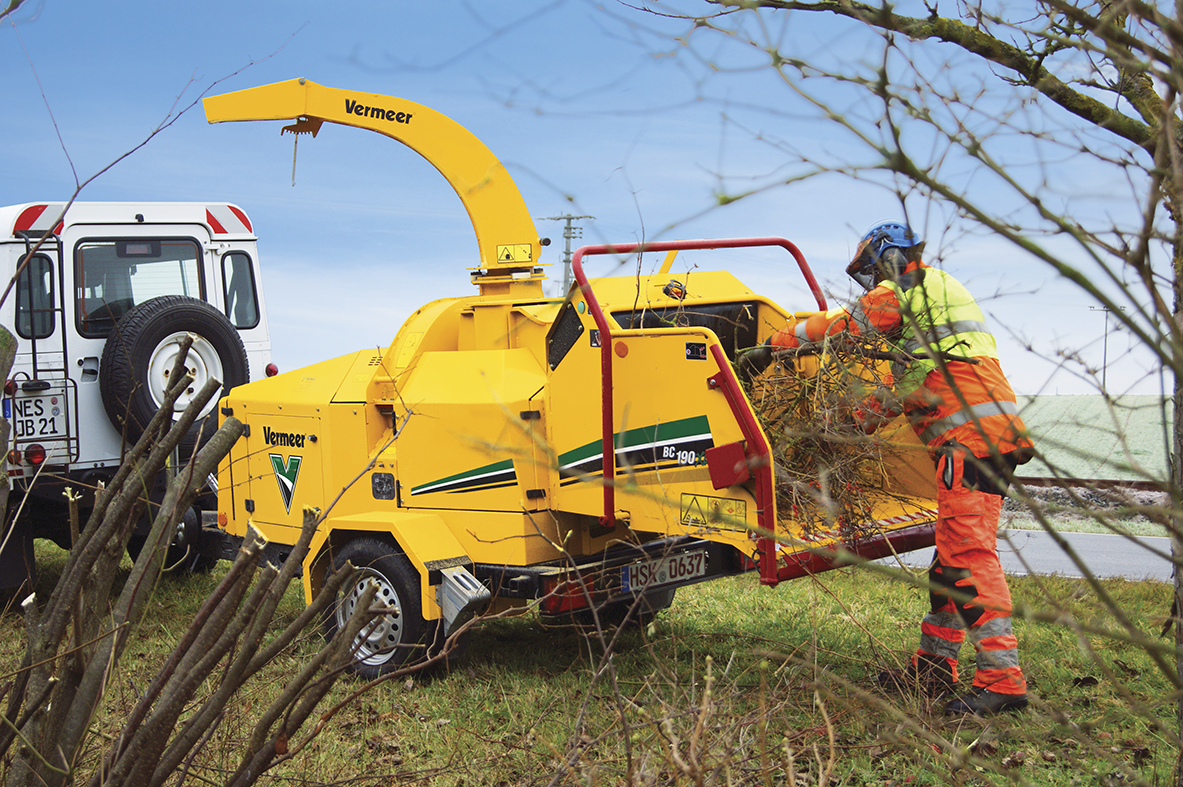Diverse is probably the best word you can use to describe the European tree care industry. No matter where you travel in Europe, each country has a different approach to tree care. However, one common trend is making its way throughout Europe is known as urban forestry — where more attention is given to maintain all the trees in an environment rather than focusing on individual trees.
This trend focuses on trees from the moment they are planted and uses formative pruning approaches to manage the growth of the tree throughout its life cycle.
“Much of the work taking place over the last 15 to 20 years has been addressing the needs of trees that were planted multiple years prior to that, and were probably the wrong choice of tree for the location or more susceptible to disease and got damaged. So in many cases these trees were simply removed,” says Tim Trick, senior design engineer for Vermeer EMEA.
Life-cycle approach to tree care
Today, tree care professionals across Europe are taking a different approach by thinking through the entire life cycle of the tree before it is planted. This includes taking into consideration the soil/site conditions and selecting a suitable tree species that will thrive in that environment. Tree care professionals also take into consideration light filtration to provide adequate shade while avoiding blocking light completely and consider the mature size of the tree to avoid major pruning in the future. A plan is also created for proactive pruning, fertilization and inspections.
“It’s all about placing the right tree in the right location and providing the very best support to ensure the tree has a long and proactive life,” says Trick. “A tree planted today in Europe will receive more attention over its life, in the form of inspections, analysis, remedial work and formative pruning, than trees planted 15 to 20 years ago.”
There is also a trend in Europe for instant gratification. Rather than planting a 4 foot (1.2 m) tall tree that will take 10 to 15 years to reach a desired size, homeowners, developers and municipalities are investing in semi-mature trees that are 10 to 15 feet (3 to 4.6 m) tall with a 6 inch (15.2 cm) trunk. These trees can cost several thousand dollars to plant but can also provide immediate shade and enjoyment in a landscape.
The industry is evolving from just tree climbing and take-downs into a life-cycle process of planning, planting, inspections, maintenance and pruning for an individual tree. This new trend will also require a larger population of tree care professionals and new technology to provide this ongoing support.
Who will do the work?
A majority of the tree care work in Europe is done/requested by local authorities or municipalities. These groups manage the tree estates — urban forests — in the city areas and the parks. Then there are also the outer suburban and utility markets.
Rather than offering services to each of these markets, European tree care professionals often specialize, and will often only work on trees in an urban, suburban or utility setting — which is quite different than the approach taken in North America.
The municipality work tends to be taken on by larger tree care service companies that may conduct all of the work or subcontract some of the work to smaller tree care providers. Within metropolitan areas, smaller tree care professionals will focus on the formative pruning and maintenance, while larger companies will focus on the heavy take-down work as needed.
No matter the size of the tree care provider, training a new generation of tree care professionals is paramount. Many of the smaller tree care providers started out with one of the larger companies and later decided to start their own business. In some rural areas (in Scandinavia for example), the tree care work may be conducted by local community organizations as well as companies that normally specialize in forestry work.
“Because Vermeer has a footprint all across Europe, we have the ability to see what new techniques are being used in the industry and share that knowledge with tree care professionals across our region,” says Trick. “We also share best practices and help tree care professionals understand the importance of cost of operation, business planning and management of business. If a tree care provider is more financially viable, then it helps grow the industry.”
The European tree care industry is also reaching out to high schools and universities to share information regarding careers in the tree care profession and industry trends to help them prepare for a successful career in the industry.
Trick has been involved in the tree care industry for more than 30 years and has witnessed many changes. He feels good about the new direction of the European tree care industry.
“I’ve always wanted to work with trees,” says Trick. “It’s in my blood, and those of us in the industry thoroughly enjoy what we do. I guess that is why the European tree care industry is growing — the people in the industry have a passion for what they do and that is driving the industry to develop.”
